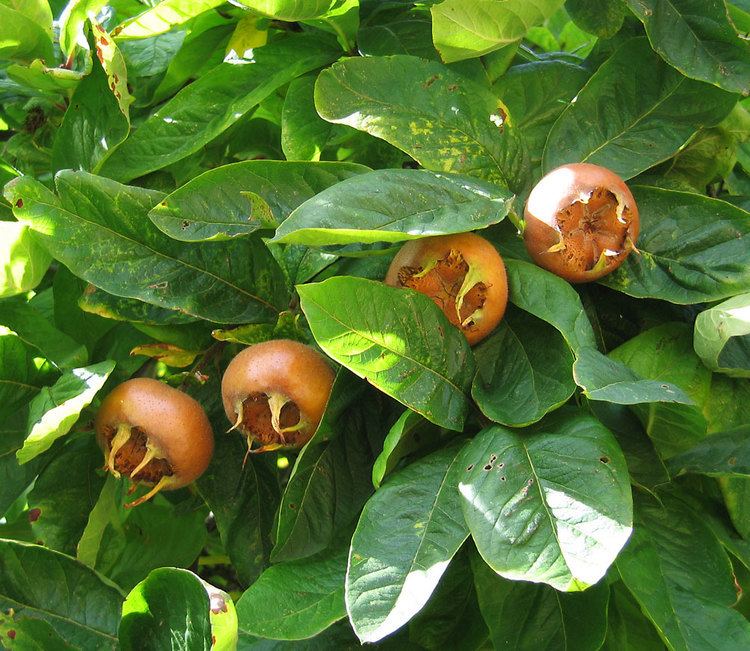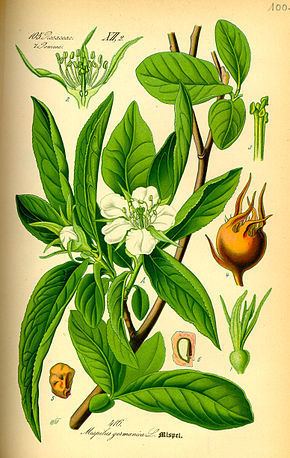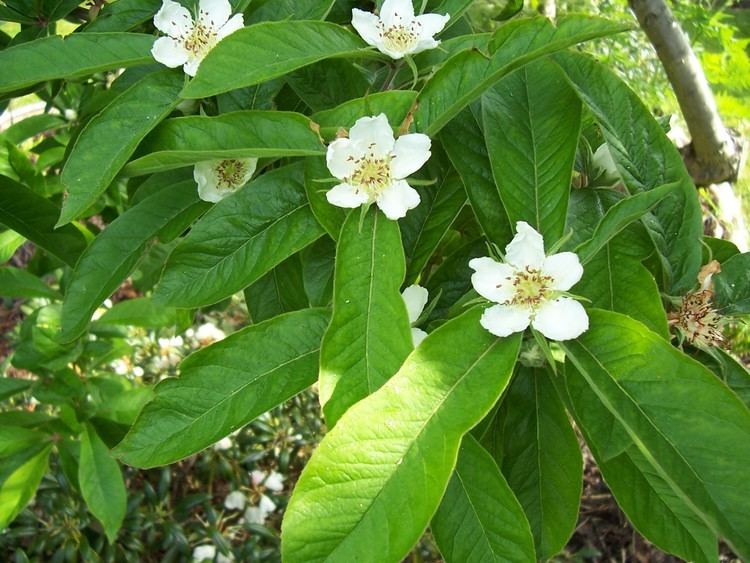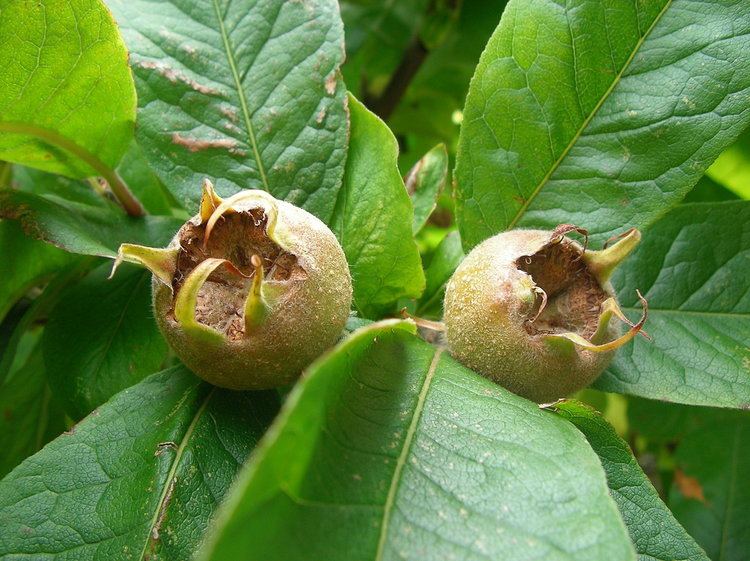Scientific name Mespilus Rank Genus | ||
 | ||
Similar Common medlar, Shadbush, Rosaceae, Quince, Eriobotrya | ||
Mespilus, commonly called medlar, is a monotypic genus of flowering plants in the family Rosaceae containing the single species Mespilus germanica of southwest Asia. A second proposed species, Mespilus canescens, discovered in North America in 1990, proved to be a hybrid between M. germanica and one or more species of hawthorn, and is properly known as ×Crataemespilus canescens.
Contents

Common medlar mespilus germanica
Plant

Mespilus are deciduous large shrubs to small trees growing up to 8 metres (26 ft) tall. The fruit is a matte brown pome.
History

Mespilus germanica is apparently native only to southwest Asia and southeastern Europe, i.e. near the Black Sea coast and western Mediterranean, and Asia Minor, as well as the Caucasus and northern Iran, but it has an ancient history of cultivation and wild plants exist in a much wider area; it was grown by the ancient Greeks and Romans, beginning in the second century BC. Mespilus germanica was a very popular fruit in Western Europe during the Middle Ages, but has fallen out of favour there.
Literature

The medlar is referenced in William Shakespeare's comedy, As You Like It, Act III, scene ii, lines 117-120 in an engaging repartee between Rosalind and Touchstone, the Fool.
Related plants
Within subfamily Amygdaloideae, Mespilus is most closely related to Crataegus, Amelanchier, Peraphyllum, and Malacomeles.

The genus Eriobotrya was once considered to be closely related to Mespilus. The loquat, one of several Eriobotrya species, was formerly thought to be closely related to the genus Mespilus, and is still sometimes known in some European countries as a medlar and is still sometimes called the "Japanese Medlar".
Many authors group Mespilus together with Crataegus in a single genus. When thus combined the correct species name is Crataegus germanica (L.) Kuntze.
Fruit
Mespilus germanica features an unusual apple-like fruit. In southern Europe the medlar fruits ripen fully and can be eaten off the tree, but in northern climates they require bletting to eat.
